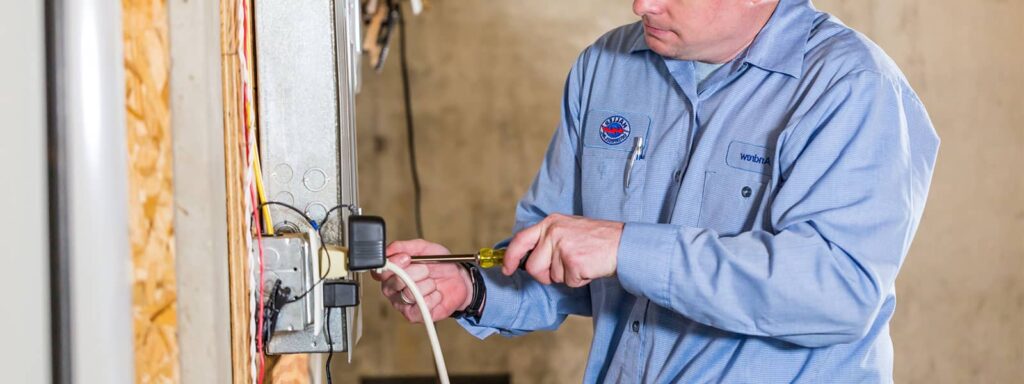For Part 1 of our “Homeowner Series” feel free to check out “What to Look for When Buying a Home.”
Moving into your new home is an exhilarating experience after the exhausting process of searching for it. Now begins step two of your homeownership adventure — making it your own. Have you found yourself wondering what to do after you buy a house? Several DIY projects, like painting a room, are likely already on your move-in list, but there are a few DIY tips for new homes you’ll want to review before starting.
Find out more about what to do after you settle into your new home, as well as how to search for damage home inspectors may miss.
Prioritize Your DIY Projects
Your checklist of projects for your home may be quite extensive, which is why it’s essential to prioritize.
Every new homeowner’s top priority is to install new locks throughout their home. If your locks remain the same, the previous owner and anyone else with a copy of the original keys can enter your home, which is why changing your locks is one of the first things you do after buying a house.
After installing new locks, return to organizing your DIY projects. Tackle the largest projects such as painting rooms or sealing windows before moving onto smaller projects like installing new smoke detectors or replacing a bathroom faucet.
Find Anything Your Home Inspector Missed
One of the things many homeowners wish they knew before they bought a house is the fact that home inspectors aren’t always thorough.
During a home inspection, inspectors often neglect one of these four areas:
- Your heating and cooling system.
- Your attic or crawl space.
- Your roof.
- Your home’s foundation.
It’s crucial you inspect these four areas within the first month of moving into your home. Why? Home inspections capture your house’s condition at only one point, so if anything is found damaged afterward, you must prove that the damage existed during the inspection.
If you find problems, contact your home inspector. Many inspection agencies have insurance that covers the cost of repairing missed damages. Asking the seller to fix the problem isn’t a viable option as you must prove they knew about the problem.
It’s a smart move to inspect your home before starting any DIY or professional projects because then its condition and structure is identical to its initial inspection, which strengthens your case that the problem existed during the first review.
Start Your DIY Projects
So you have prioritizing your projects and inspecting your home checked off your “what to do after I buy a house” checklist. Now you’re ready to start those DIY projects:
Seal Drafty Windows
A common problem among older homes is drafty windows, which can raise your heating, cooling and electricity bills. Home inspectors often check windows, as well as their frames, for rot and damage.
Double-check for drafts by turning on your kitchen and bathroom vents and shutting off any appliances that use fuel, like a furnace. Light a stick of incense and hold it at the corner of each window. If the smoke from the incense shifts direction, air is escaping through the window.
Short-term fixes like shrink film are available, but since you just moved in and there’s room to work, use a longer-lasting approach, like replacing the missing glaze from the window.
Replacing a window’s glaze is easy and cost-effective. It requires you to remove the window pane and old glaze, and then add the new seal. Purchasing and installing a new window is also an option, especially if the frame has water damage because of the cracked seal.
Upgrade Your Heating and Air System
Upgrades to your heating and cooling system may lower your monthly costs, as well as help your system run more efficiently. Different types of updates are available and depend on your type of heating and air system.
Programmable thermostats, for example, are an option for most systems like natural gas, oil or electric systems. The benefit of a programmable thermostat is it adjusts to your preferences and the time of day so your home may be cooler while you’re at work and then warmer when you’re home. If you install a programmable thermostat, know that it’ll require some electrical wiring.
Another DIY project for your home’s heating and cooling system is replacing the ductwork. You may need to replace ductwork due to leaks, which cause poor air quality because dust and pollen are entering the duct and circulating throughout your home. Ductwork replacement is a major project because it extends throughout your home and often requires two people.
Rewire Electrical Fixtures
Installing and wiring new light fixtures into your home may be near the end of your checklist depending on the extent of your rewiring project. If you’re rewiring a few electrical fixtures, the process is simple because you’re only replacing the sockets and stripping some of the fixture’s wire. However, if you’re inexperienced at wiring projects and electrical work, it’s always best to call a professional. The work might seem easy, but it can be shockingly dangerous.
Rewiring a home is a task you should only undertake if you have extensive electrical experience, as faulty wiring can cause a fire. If you have the experience, remember to check your town’s local codes and file for any necessary permits before beginning work.
Once you’ve finished your DIY projects, you’re ready to move onto the next big task of moving in — unpacking your boxes.
Need a Helping Hand?
When it comes to new home DIY tips, the golden rule is, “Don’t start a project if you’re not comfortable with it.” The last thing you want is to damage your home’s electrical wiring or realize you’re not equipped to replace your home’s ductwork halfway through. Understand the depth of each project and only complete the ones you’re confident in handling.
If you need help with certain projects such as those related to home wiring or heating and cooling systems we’re happy to assist at Haller Enterprises. We have more than 30 years of experience helping new homeowners, so contact us today to find out how we can help you!




